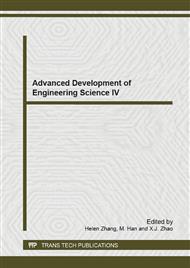p.177
p.182
p.187
p.191
p.196
p.200
p.205
p.209
p.215
The Analysis of Direct Numerical Simulation and Experiment in Critical Point of Transitional Flow
Abstract:
In order to study the lower critical point in transitional area of pipe, we used the method of direct numerical simulation to simulate fluid flow and contrasted it with experiment. The result showed that the flow state is close to laminar. Along the pipe axis, the change of pressure is not obviously. The changing rate of axial velocity U near wall region was significantly greater than in the mainstream area, it proved the important role of viscous force.
Info:
Periodical:
Pages:
196-199
Citation:
Online since:
October 2014
Authors:
Keywords:
Price:
Сopyright:
© 2014 Trans Tech Publications Ltd. All Rights Reserved
Share:
Citation:


